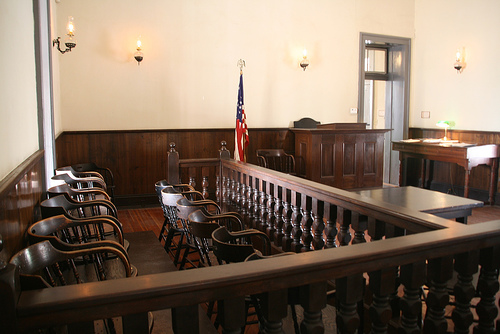Chapter 440, the body of statutes governing Florida’s workers’ compensation system, places on the injured worker, also known as the Claimant, the burden of proving the accident caused his or her injuries. Almost always, medical evidence is required to meet the burden.
Certain elements must be established to meet the burden. Shown below is the information I rely on to keep from missing one or more critical elements. Also helpful in realizing the essential medical proof is Form DWC-25, Florida Workers’ Compensation Uniform Medical Treatment/Status Reporting Form, the form all authorized doctors are required to complete and submit to the carrier after every appointment.
Florida Statute 440.09 Coverage.—- (1) The employer must pay compensation or furnish benefits required by this chapter if the employee suffers an accidental compensable injury or death arising out of work performed in the course and the scope of employment. The injury, its occupational cause, and any resulting manifestations or disability must be established to a reasonable degree of medical certainty, based on objective relevant medical findings, and the accidental compensable injury must be the major contributing cause of any resulting injuries. For purposes of this section, “major contributing cause” means the cause which is more than 50 percent responsible for the injury as compared to all other causes combined for which treatment or benefits are sought. In cases involving occupational disease or repetitive exposure, both causation and sufficient exposure to support causation must be proven by clear and convincing evidence. Pain or other subjective complaints alone, in the absence of objective relevant medical findings, are not compensable. For purposes of this section, “objective relevant medical findings” are those objective findings that correlate to the subjective complaints of the injured employee and are confirmed by physical examination findings or diagnostic testing. Establishment of the causal relationship between a compensable accident and injuries for conditions that are not readily observable must be by medical evidence only, as demonstrated by physical examination findings or diagnostic testing. Major contributing cause must be demonstrated by medical evidence only.
Elements of 440.09 requiring medical testimony:
- The injury, its occupational cause, and any resulting manifestations or disability must be established to a reasonable degree of medical certainty,
- based on objective relevant medical findings,
- and the accidental compensable injury must be the major contributing cause of any resulting injuries.
- For purposes of this section, “major contributing cause” means the cause which is more than 50 percent responsible for the injury as compared to all other causes combined for which treatment or benefits are sought.
- In cases involving occupational disease or repetitive exposure, both causation and sufficient exposure to support causation must be proven by clear and convincing evidence. (Note: What does “medical certainty” mean? Who knows. Black’s Law Dictionary says that it is more than probable. Regular dictionary says certain means: inevitable, sure to happen, indisputable, dependable. If the doctor asks what it means, tell him or her that it is something that is reasonably sure to happen.)
- Pain or other subjective complaints alone, in the absence of objective relevant medical findings, are not compensable.
- For purposes of this section, “objective relevant medical findings” are those objective findings that correlate to the subjective complaints of the injured employee and are confirmed by physical examination findings or diagnostic testing.
- Establishment of the causal relationship between a compensable accident and injuries for conditions that are not readily observable must be by medical evidence only, as demonstrated by physical examination findings or diagnostic testing.
- Major contributing cause must be demonstrated by medical evidence only.
Florida Statute Section 440.02(1): When used in this chapter, unless the context clearly requires otherwise, the following terms shall have the following meanings:
(1) “Accident” means only an unexpected or unusual event or result that happens suddenly. Disability or death due to the accidental acceleration or aggravation of a venereal disease or of a disease due to the habitual use of alcohol or controlled substances or narcotic drugs, or a disease that manifests itself in the fear of or dislike for an individual because of the individual’s race, color, religion, sex, national origin, age, or handicap is not an injury by accident arising out of the employment. Subject to s. 440.15(5), if a preexisting disease or anomaly is accelerated or aggravated by an accident arising out of and in the course of employment, only acceleration of death or acceleration or aggravation of the preexisting condition reasonably attributable to the accident is compensable, with respect to any compensation otherwise payable under this chapter. An injury or disease caused by exposure to a toxic substance, including, but not limited to, fungus or mold, is not an injury by accident arising out of the employment unless there is clear and convincing evidence establishing that exposure to the specific substance involved, at the levels to which the employee was exposed, can cause the injury or disease sustained by the employee.
Elements of 440.02(1) requiring medical testimony:
- Subject to s. 440.15(5), if a preexisting disease or anomaly is accelerated or aggravated by an accident arising out of and in the course of employment, only acceleration of death or acceleration or aggravation of the preexisting condition reasonably attributable to the accident is compensable….
- An injury or disease caused by exposure to a toxic substance, including, but not limited to, fungus or mold, is not an injury by accident arising out of the employment unless there is clear and convincing evidence establishing that exposure to the specific substance involved, at the levels to which the employee was exposed, can cause the injury or disease sustained by the employee.
 Florida Injury Attorney Blawg
Florida Injury Attorney Blawg








